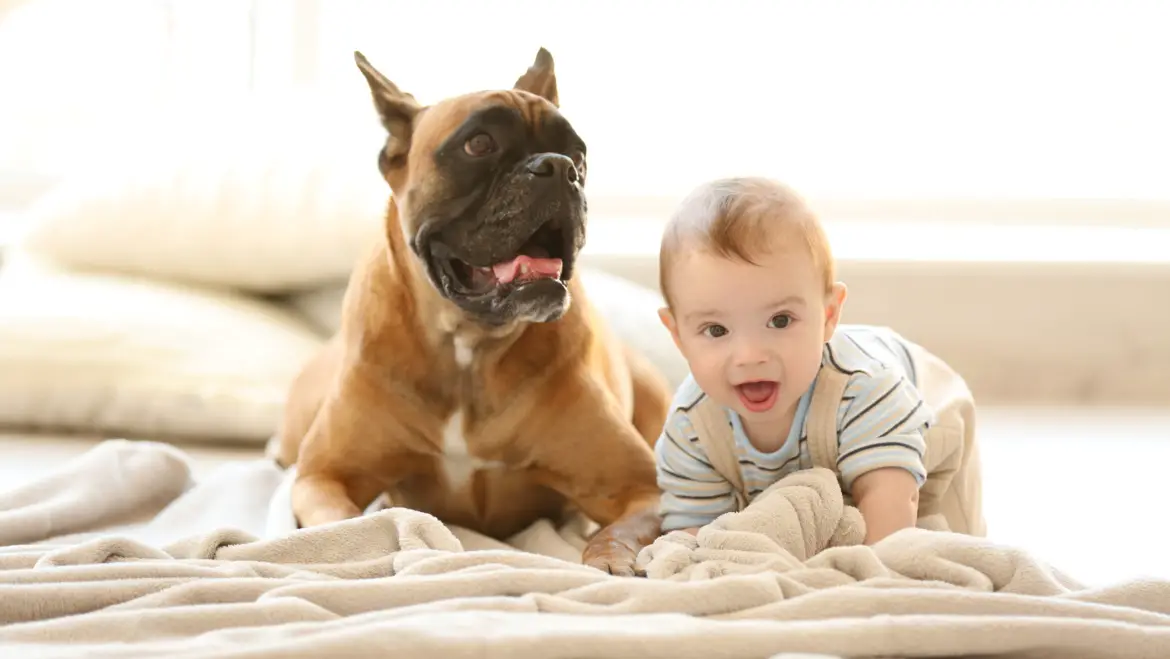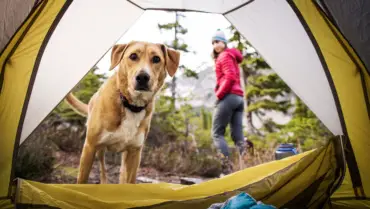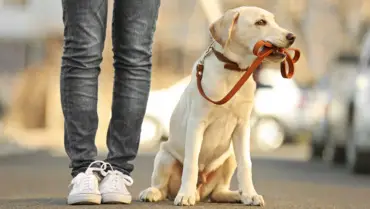Are you considering bringing a furry friend into your family? Adopting a rescue dog can be an incredibly rewarding experience, but introducing them to young children comes with its own set of challenges.
Don’t worry though, we’ve got you covered! In this blog post, we’ll share strategies for successfully integrating your rescue pup into the family dynamic and fostering healthy relationships between your kids and their new four-legged companion.
Stay tuned for some expert tips on creating lasting bonds that will make everyone’s hearts (and tails) wag with joy!
How to Prepare Your Dog for the Introduction
If you’re introducing your rescue dog to young kids for the first time, there are some things you can do to help make the transition smooth and successful. First, it’s important that your dog is comfortable around children and enjoys their company.
If your dog doesn’t seem to like being around kids, it may be best to wait until they’re a bit older before making introductions. Secondly, make sure your dog is well-trained and under control before bringing them into a situation with children. This means teaching them basic obedience commands like sit, stay, and come, as well as working on manners such as not jumping up or begging for food.
Finally, give your child a chance to get to know the dog gradually by letting them approach the dog on their own terms and at their own pace. With patience and careful preparation, you can help make introductions between your rescue dog and young children a positive experience for everyone involved.
Supervise Interactions with Children at All Times
Interactions between children and dogs should always be supervised by an adult to ensure the safety of both. Dogs may view small children as prey, and children may not understand how to properly interact with dogs.
The best way to prevent any accidents is to never leave a child unsupervised with a dog, no matter how friendly the dog may seem. If you have young kids in your home and are introducing a new rescue dog to the family, there are some strategies you can use to help make the transition smoother for everyone involved.
First, provide your rescue dog with a safe space such as a crate or baby gate-restricted area where they can go to relax and feel comfortable. This will give them an escape from any overwhelming situations. Next, gradually introduce your rescue dog to each member of the family separately, starting with the youngest.
Allow them to approach each other on their own terms and get familiar with one another’s smells before attempting any physical interactions. Once they seem comfortable, you can begin supervised play sessions where everyone involved knows the rules beforehand (no pulling tails, no climbing on top of the dog, etc.). Finally, continue to reinforce good behavior with positive reinforcement such as treats or verbal praise.
Teach Your Pet Basic Manners and Commands
It is important to start teaching your pet basic manners and commands as soon as you can. This will help them understand what is expected of them and give them a way to communicate with you. Dogs that have a good understanding of commands are less likely to get into trouble and be sent to shelters. Here are some tips for teaching your pet basic manners and commands:
1. Be Consistent When you are training your pet, it is important to be consistent with your commands. If you use different words for the same command, or give a command in a different tone than usual, your pet will get confused. It is also important to be consistent with the rewards you give your pet for completing a command. This will help them understand that they are being rewarded for doing what you asked.
2. Keep Training Sessions Short Training sessions should be short, so that your pet does not get bored or overwhelmed. It is better to have several short sessions throughout the day than one long session. You can gradually increase the length of the sessions as your pet gets better at following commands.
3. Be Patient Training takes time and patience. Do not expect your pet to learn everything overnight. Some pets may take longer to learn than others, but if you are patient and consistent, they will eventually catch on.
Show Your Pet Love and Affection
One of the best ways to show your pet love and affection is by giving them plenty of attention. Spend time every day playing with your pet, and be sure to give them lots of physical affection, like petting and scratching.
It’s also important to feed your pet regularly and make sure they have access to fresh water. Another way to show your pet love and affection is by providing them with a safe and comfortable place to sleep. Dogs especially love cozy beds, so be sure to give your furry friend a bed that they can call their own.
Finally, keep your pet healthy by taking them for regular check-ups at the vet, and provide them with any necessary medications or supplements. By showing your pet love and affection in all these different ways, you’ll help create a strong bond between you and your four-legged friend.
Make the Interaction Positive and Fun
When introducing your rescue dog to young kids, it’s important to make the interaction positive and fun. Here are a few strategies to help you do just that:
1. Playtime is crucial – Make sure to set aside some time each day for playtime with your dog. This will help them bond with the kids and build up their energy so they’re less likely to have an accident in the house.
2. Be consistent – Dogs thrive on consistency, so it’s important to be consistent with your commands and expectations. If the kids are allowed to roughhouse with the dog one day, but not the next, it will only confuse and frustrate both parties.
3. Reward good behavior – Be sure to praise your dog when they behave well around the kids. This will reinforce desired behaviors and help them understand what you expect from them.
4. Keep it positive – Avoid scolding or punishing your dog around the kids. This can only create negative associations and further damage their already fragile ego. Instead, focus on teaching them what you DO want them to do (e.g., “Sit” or “Stay”).
5. Have patience – It takes time for dogs and children to develop a relationship, so be patient while they get adjusted to each other’s company. With a little time and patience, you’ll see amazing results!
Set Up Clear Rules About Playtime
Introducing your rescue dog to young kids can be a bit of a challenge. You want to make sure that your new furry friend feels comfortable and doesn’t get overwhelmed, but you also want to ensure that everyone in the family is safe and happy.
One of the best ways to achieve this balance is to set clear rules about playtime. Here are a few things to keep in mind when setting up rules about playtime:
– Rescue dogs may have had bad experiences with children in the past, so it’s important to go slowly at first and give them plenty of time to adjust.
– Be consistent with the rules. Everyone in the family should be on the same page about when and how kids can interact with the dog.
– Make sure the rules are age-appropriate. For example, younger children might need to be supervised more closely around the dog than older ones. By following these tips, you can help your rescue dog feel comfortable around kids and create a fun, safe environment for everyone in the family.
Monitor Your Child’s Reaction
When you first bring your rescue dog home, it’s important to monitor your child’s reaction to the new pet. Some kids may be scared or intimidated by a big dog, so it’s important to be there to help them feel comfortable.
If your child is excited about the new dog, help him or her understand the importance of being gentle and respectful. Explain that the dog is still getting used to its new home and needs time to adjust.
Encourage your child to give the dog plenty of space and not to try to play with it too much at first. It’s also important to teach your child how to properly approach and touch a dog. Show them how to pet the dog gently on the back or side instead of grabbing or hugging it. Let them know that they should always ask permission before approaching or touching any dog, even if it’s their own.
Troubleshooting Tips if Things Don’t Go Well
If you find yourself in a situation where your rescue dog isn’t getting along with your young kids, there are a few troubleshooting tips you can try.
First, make sure that you’re giving your dog plenty of exercise. A tired dog is a good dog, and if your rescue is full of energy it may be acting out in order to get attention.
Secondly, continue to socialize your rescue dog as much as possible. The more exposure they have to different people and situations, the better they’ll be able to handle themselves around kids.
Finally, be patient and consistent with training. Dogs are creatures of habit and the more you reinforce good behavior, the more likely they are to continue exhibiting it.
Conclusion
Introducing a rescue dog to young kids can be a challenging but rewarding process. It is important to take the time to understand your dog’s individual needs and temperament, as well as those of the children, so that both parties can feel safe and comfortable.
Following these strategies such as taking baby steps in introducing them and managing expectations on both ends will help ensure that the experience goes smoothly and with minimal stress for all involved.
With some patience, understanding, and positive reinforcement, you can create an atmosphere of harmony between your family members – human and canine alike!





Add Comment